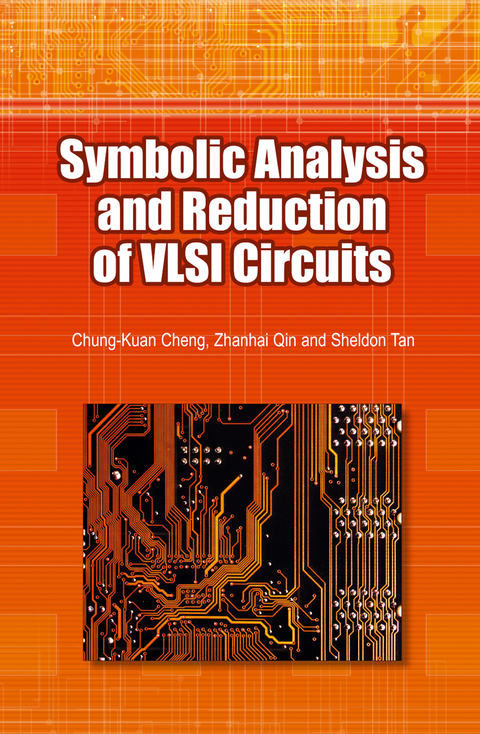
Symbolic Analysis and Reduction of VLSI Circuits
Springer-Verlag New York Inc.
978-1-4419-3671-4 (ISBN)
The analysis methods are crucial for the applications to the parasitic reduction and analog circuit evaluation.
Symbolic analysis is an intriguing topic in VLSI designs.
The analysis methods are crucial for the applications to the parasitic reduction and analog circuit evaluation. However, analyzing circuits symbolically remains a challenging research issue. Therefore, in this book, we survey the recent results as the progress of on-going works rather than as the solution of the field.
For parasitic reduction, we approximate a huge amount of electrical parameters into a simplified RLC network. This reduction allows us to handle very large integrated circuits with given memory capacity and CPU time. A symbolic analysis approach reduces the circuit according to the network topology. Thus, the designer can maintain the meaning of the original network and perform the analysis hierarchically.
For analog circuit designs, symbolic analysis provides the relation between the tunable parameters and the characteristics of the circuit. The analysis allows us to optimize the circuit behavior.
The book is divided into three parts. Part I touches on the basics of circuit analysis in time domain and in s domain. For an s domain expression, the Taylor's expansion with s approaching infinity is equivalent to the time domain solution after the inverse Laplace transform. On the other hand, the Taylor's expansion when s approaches zero derives the moments of the output responses in time domain.
Part II focuses on the techniques for parasitic reduction.
In Chapter 2, we present the approximation methods to match
the first few moments with reduced circuit orders.
In Chapter 3, we apply the Y-Delta transformation to reduce the dynamic linear network. The method finds the exact values of the low order coefficients of the numerator and denominator of the transfer function and thus matches part of the moments. In Chapter 4, we handle two major issues of the Y-Delta
transformation: common factors in fractional expressions and round-off errors. Chapter 5 explains the stability of the reduced expression, in particular the Ruth-Hurwitz Criterion. We make an effort to describe the proof of the Criterion because the details are omitted in most of the contemporary textbooks. In Chapter 6, we present techniques to synthesize circuits to approximate the reduced expressions after the transformation.
In Part III, we discuss symbolic generation of the determinants and cofactors for the application to analog designs. In Chapter 7, we depict the classical topological analysis approach. In Chapter 8, we describe a determinant decision diagram approach that exploits the sparsity of the matrix to accelerate the computation. In Chapter 9, we take only significant terms when we search through
determinant decision diagram to approximate the solution.
In Chapter 10, we extend the determinant decision diagram
to a hierarchical model. The construction of the modules through the hierarchy is similar to the Y-Delta transformation in the sense that a byproduct of common factors appears in the numerator and denominator. Therefore, we describe the method to prune the common factors.
Zhanhai Qin received his B.S. degree in computer science and technology from Tsinghua University in 1999, and his Ph.D. degree in computer science and engineering from University of California, San Diego in 2003. He is now working at Synopsys Inc. His research interests include circuit analysis and simulation, signal integrity issues in deep sub-micron VLSI designs. Sheldon X.-D. Tan received his B.S. and M.S. degrees in electrical engineering from Fudan University, Shanghai, China in 1992 and 1995, respectively and his Ph.D. in electrical and computer engineering from the University of Iowa, Iowa City, in 1999. He is an Assistant Professor in the Department of Electrical Engineering, University of California, Riverside. His research interests include several aspects of design automation for VLSI integrated circuits -- modeling, analysis and optimization of mixed-signal/RF/analog circuits, high-performance and intelligent embedded systems, signal integrity issues in VLSI physical design, high performance power/ground distribution network design and optimization. Dr. Tan received a Best Paper Award from the 1999 IEEE/ACM Design Automation Conference. Chung-Kuan Cheng received B.S. and M.S. degrees in electrical engineering from National Taiwan University, and a Ph.D. in electrical engineering and computer sciences from University of California, Berkeley in 1984. He is a Professor in the Computer Science and Engineering Department, University of California, San Diego, and an IEEE fellow. He received the best paper award IEEE Trans. on Computer-Aided Design in 1997, and in 2002 received the NCR excellence in teaching award from the UCSD School of Engineering. His research interests include circuit analysis, physical synthesis, and interconnect optimization.
Fundamentals.- Basics Of Circuit Analysis.- Linear VLSI Circuits.- Model-Order Reduction.- Generalized Y-? Transformation — Fundamental Theory.- Generalized Y-? Transformation — Advance Topics.- Y-? Transformation: Application I — Model Stabilization.- Y-? Transformation: Application II — Realizable Parasitic Reduction.- Analog VLSI Circuits.- Topological Analysis of Passive Networks.- Exact Symbolic Analysis Using Determinant Decision Diagrams.- S-Expanded Determinant Decision Diagrams for Symbolic Analysis.- DDD Based Approximation for Analog Behavioral Modeling.- Hierarchical Symbolic Analysis and Hierarchical Model Order Reduction.
| Erscheint lt. Verlag | 29.10.2010 |
|---|---|
| Zusatzinfo | XXIV, 284 p. |
| Verlagsort | New York, NY |
| Sprache | englisch |
| Maße | 155 x 235 mm |
| Themenwelt | Technik ► Elektrotechnik / Energietechnik |
| ISBN-10 | 1-4419-3671-8 / 1441936718 |
| ISBN-13 | 978-1-4419-3671-4 / 9781441936714 |
| Zustand | Neuware |
| Haben Sie eine Frage zum Produkt? |
aus dem Bereich


